Tuesday 19th July 2016
From the map I’d been given, it didn’t look like a long walk from the house and gardens to Cotehele Mill. But it would involve following the narrow roads downhill. I didn’t fancy walking back uphill so late in the day and hopped in to my car.
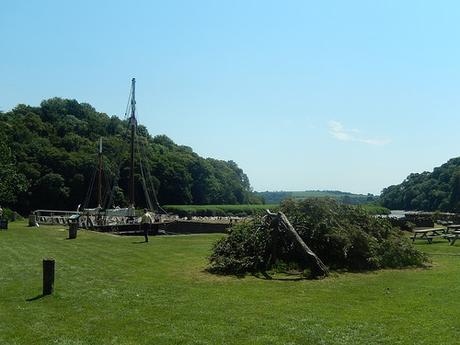
At first attempt, I settled in to the wrong car park – as it happened, this was the main car park for the house, meaning that I’d unknowingly parked in the large overflow car park earlier. Righting my wrong, I made my way downhill and to the next car park.
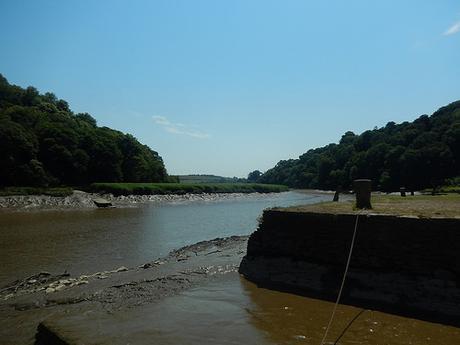
There were a number of cars but it felt like much more of a relaxed atmosphere, being beside the River Tamar, which I likened to the River Wye.
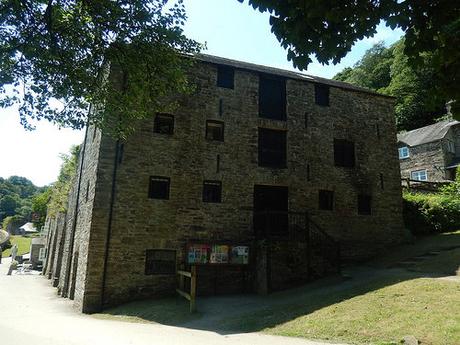
There were two small museums nearby… I forget what they were showcasing but neither of them interested me enough to warrant a personal visit (plus, there was the thought of being stuck indoors on a day of 25°C).
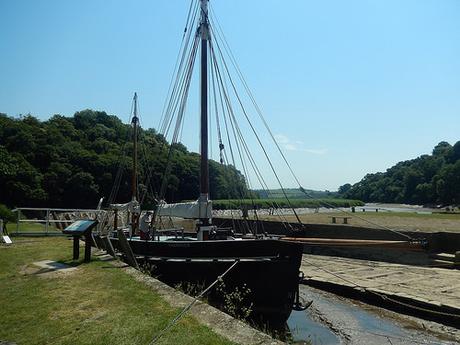
There was a restaurant or café in that large building to my right and, since it was probably about 14.00 at this time, it was very tempting, as I hadn’t yet stopped for lunch. First, my focus was on the significant ship ahead of me.
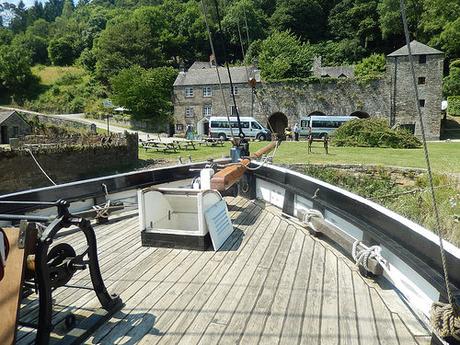
This area’s actually known as Cotehele Quay and the boat restored ship is known as Shamrock; once a sailing barge upon the Tamar.
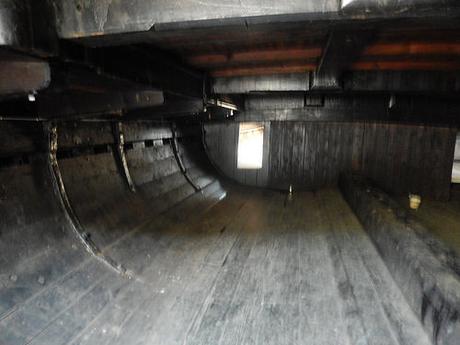
A nearby volunteer informed me that I was welcome to climb aboard and explore it for myself. He did not ask to see a membership card or anything and he did look after my backpack while I went below the deck.

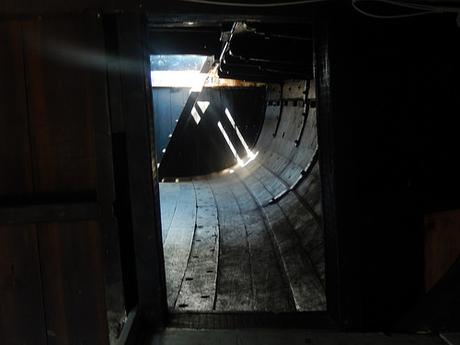
He’d also advised me that it was “safer” to descend via the steps to the right, near the bow. Below the deck, I immediately dropped to my hands and knees in order to continue exploring without losing my head.
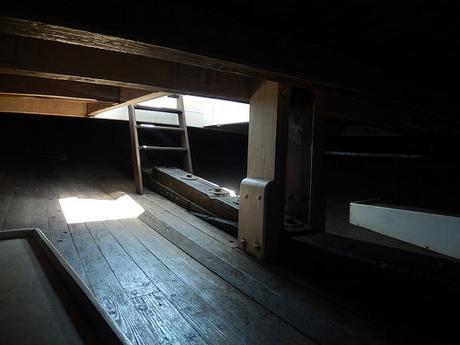
Aside from being warm in there, the final few metres towards the ascending steps were a reasonable challenge for someone 6ft1in tall (or long, in this case). This wouldn’t be the best of places for someone who suffers from claustrophobia, unfortunately. But I enjoyed the brief experience and don’t think I would’ve made it out the other end, had I not left my backpack behind.
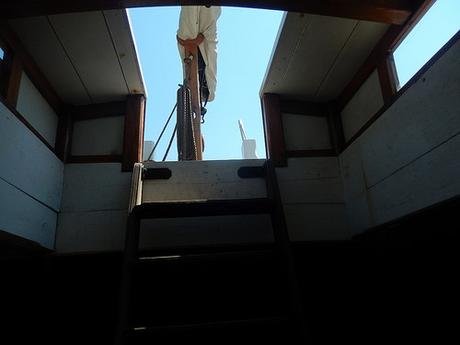
Of course, people weren’t really that short in the years when this boat would’ve been in operation and they would’ve worked here without the roof – which, as I was told, was only a more recent installation as part of the restoration work.
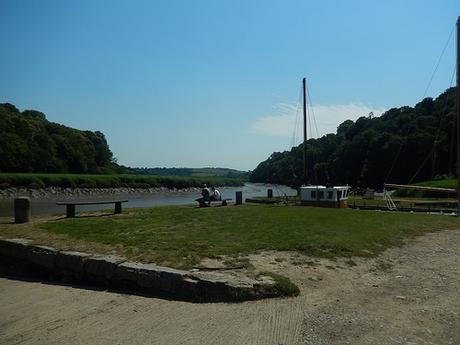
As I collected the my backpack, the same man who had guarded it asked if I was ‘passing through’… I guess I do like more like an adventurer than your average shirt-buttoned-up-with-smart-trousers-and-shoes National Trust visitor! He also made reference to the weight of my pack, as people often do… My mental response is always that ‘I’m only carrying 2lt of water…’. I guess I’m just used to it.
I recently weight my backpack, once equipped for a walk with 2.2lt of water… It weighed almost 18kg. I think the pack is rated for 14kg but I do not feel it, compared to my previous model.
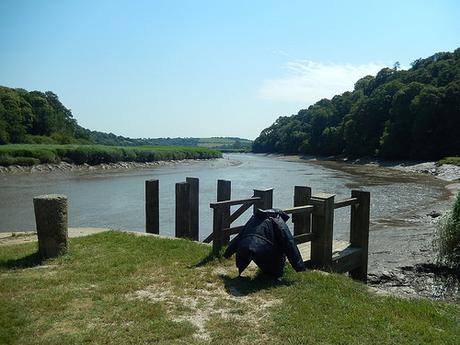
Of course, that wasn’t my coat left at the Quayside… Mine was probably stuffed deep inside my overweight backpack!

Elsewhere, you could find ‘relics’ of the Quay and its history. Before venturing on a walk towards the watermill, I stopped in at the café for a sandwich (possibly a Ploughman’s – I remember the word ‘Cheddar‘) and full pot of tea, serving up to three cups.
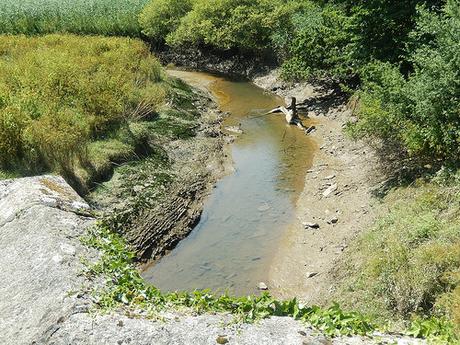
Following signs from here on, I immediately left the riverside, following a shallow stream in to the woods.
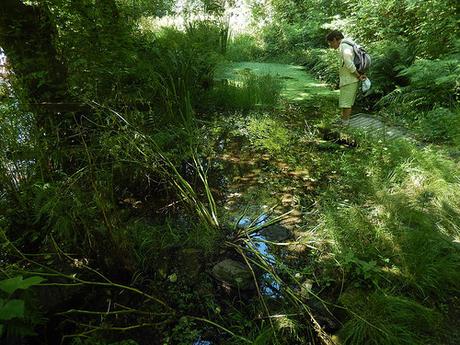
It was shaded and, as the stream grew wider to form a pond, I almost felt like the temperature was falling.
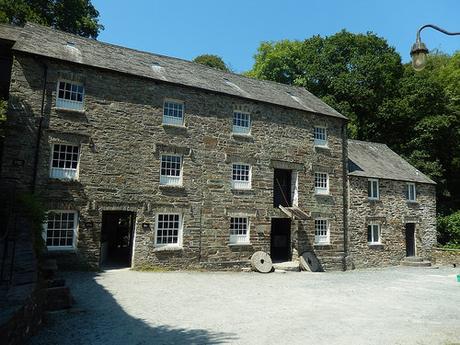
Beyond the manned visitor center – where you do have to pay or show your membership card, as it is treated as a separate site to the house – it was a short walk to the mill. Someone had commented on how it must’ve been ‘nice and cool’ over in the house… To which, I informed her, that it was equally hot inside and out.
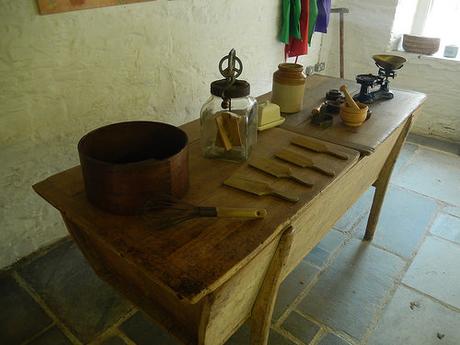
You can explore each of the three floors to this building and the tour begins with a few steps through the kitchen, to the rear of the building.
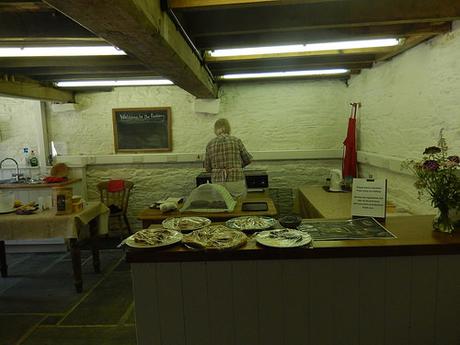
A volunteer was baking away and you’re encouraged to sample the offerings, with a donation box on one side. I’ll say again that this is a working mill; one that’s frequently used to produce flour for this kitchen. Sadly, the mill was not working on the day of my visit but that was a rare occurrence.
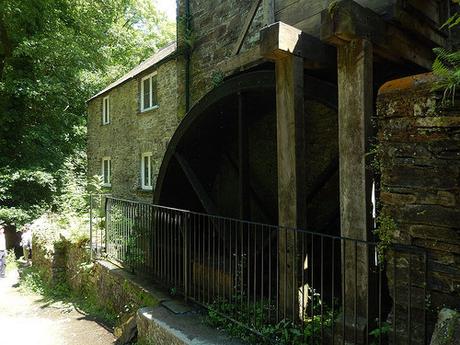
Outside, on the rear of the property, you come to the waterwheel.
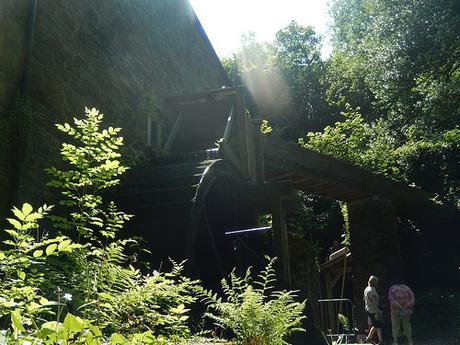
There was conservation work going on overhead – I think they were working on the roof of the building, which may explain why the mill was ‘off’, on this day.
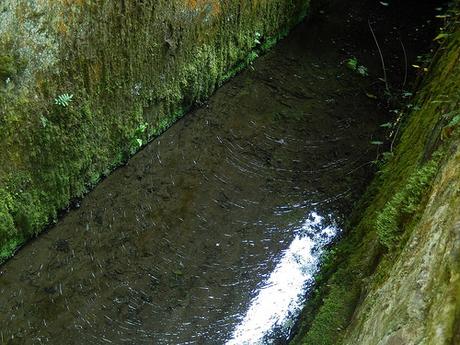
Interesting patterns form in the water beneath the wheel.
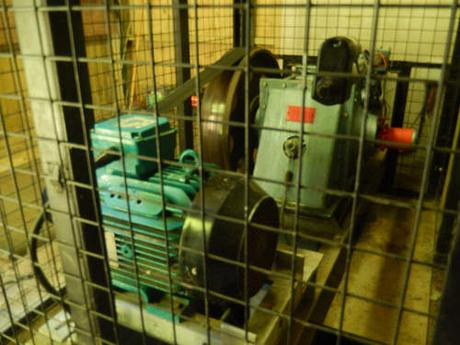
Not far from this was a shed containing a hydroelectric generator, which uses the force of flowing water to generate (relatively small amounts) of electricity that can then be returned to the grid.
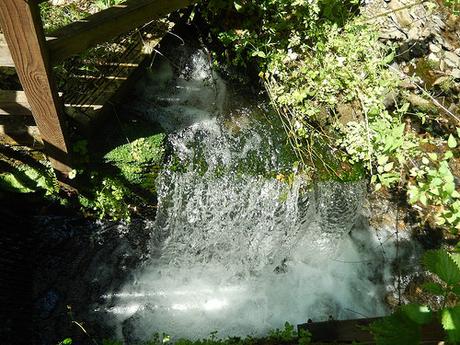
We live on a planet that is mostly covered in water. There are parts of the Earth’s oceans that are so deep, no man has ever explored there. Sea levels are a part of our lives. Rivers run all over many landscapes…
WHY are we not making more of an effort to leave nuclear power behind and make use of what is natural and all around us?!
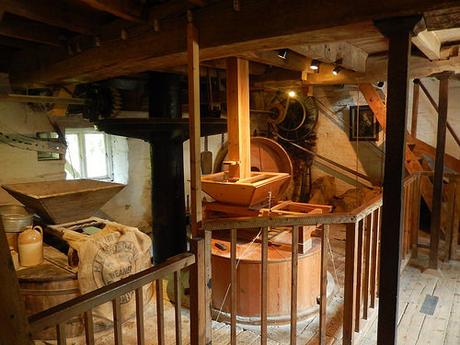
Next, I began to climb a set of wooden steps alongside the building, where I entered a doorway on to the first floor and met the temporarily-non-working portion of the mill.
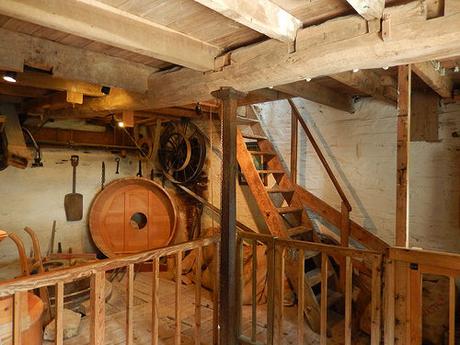
Of course, the working parts look very new, compared to the surrounding structural timbers. Speaking of which, the notches within these beams tell a story of their and how this building has changed, over time.
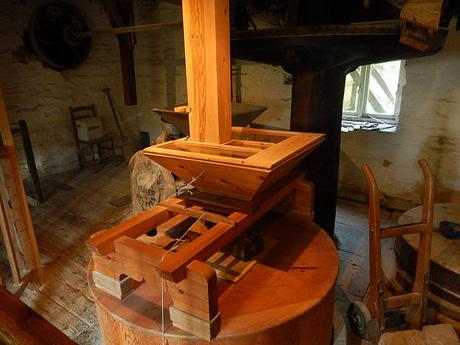
Presumably, the flour passes down through here before reaching the kitchen.
Then, it was up to the second floor…
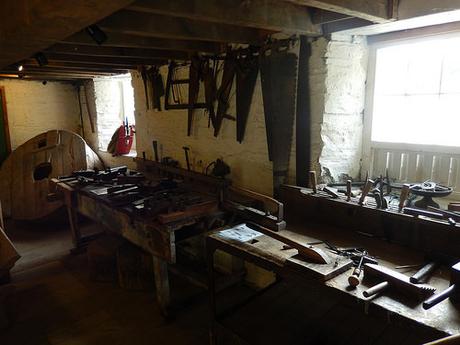
TOOLS!
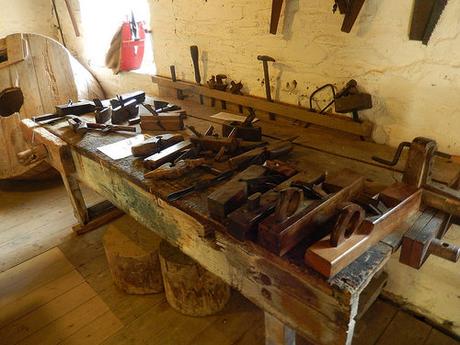
HAND TOOLS!
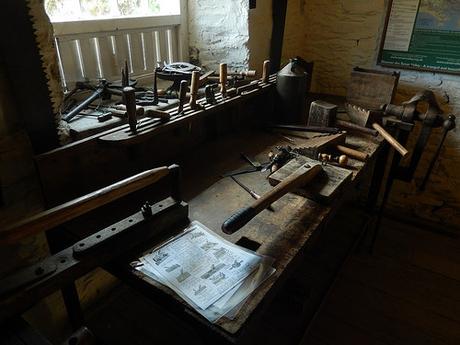
Lots of hand tools!
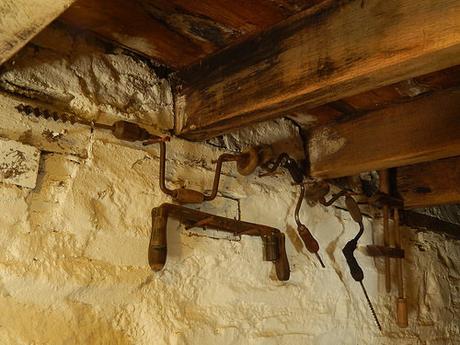
There wasn’t a metal-bodied hand plane to be found. A mallet was the first tool I picked up (everything is wired to a point on the workbench, to prevent theft) and, from the handle, the head immediately hit the floor with a thud! I was relieved no-one else was around.
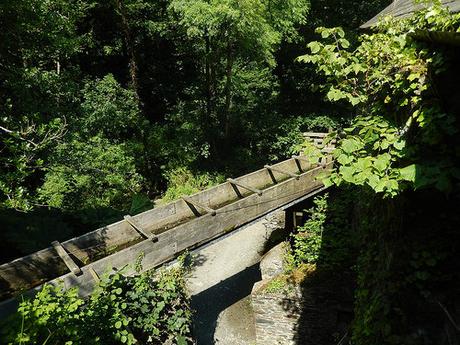
Outside, you could see the wooden trough the carries the water from its natural source and on to the wheel.
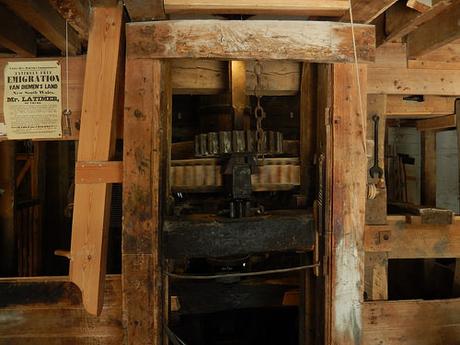
It’s hard to see in these photos but this uppermost portion of the mill was working; being driven by the large waterwheel outside.
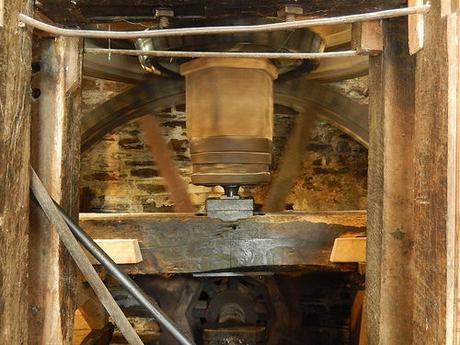
I wonder whether we’ll one day see a resurgence or revival of the waterwheel. We cannot go on burning fossil fuels and risking mass outbreaks of radiation, forever.
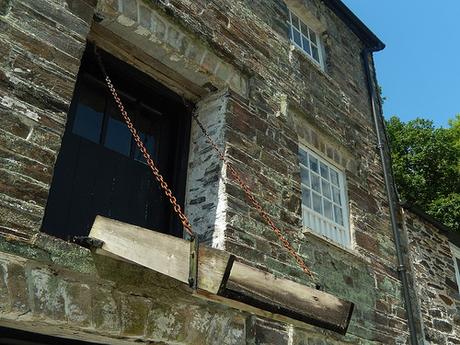
On the hillsde above the visitor centre, there’s another small arrangement of workshops.
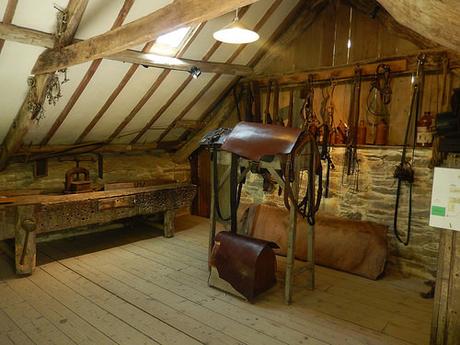
This was the saddlery.
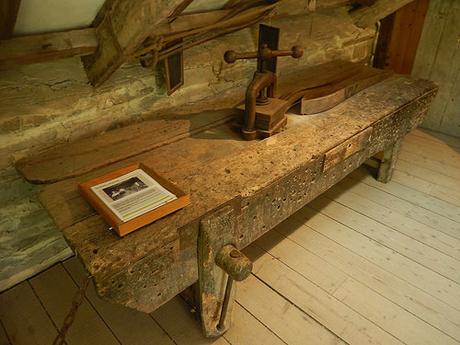
Their workbench was almost as impressive and substantial as those that many woodworkers will aspire to build today.
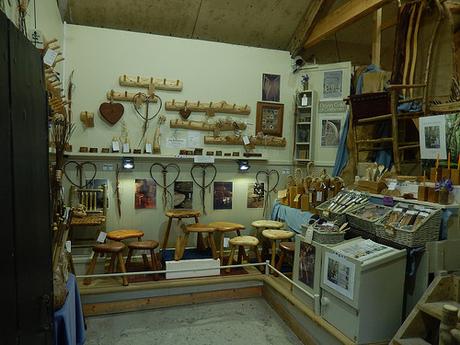
They’d told me there was ‘a woodworker’ up here as well… I’d expected to find another ‘redundant’ workspace; hoped to be able to step in to a working space with tools, machinery, the whole lot… I’d assume that area is not open to the public as the space I entered was more of a ‘gift shop’, selling all of the crafty wares of Barry Mays. There were many nice things but ones I’d rather make myself, when the time is right.
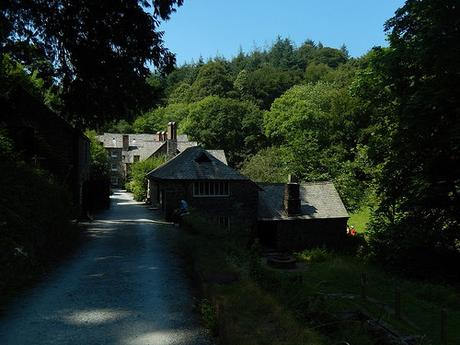
Heading back down, I spied a ditch-like feature in the ground beneath me.
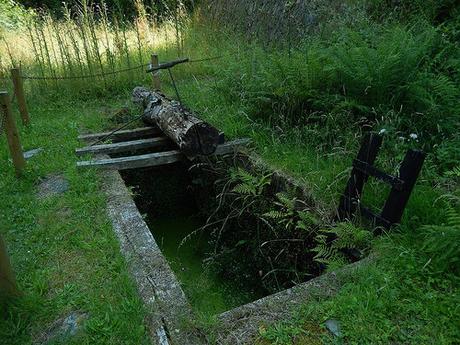
This is actually what’s known as a Saw Pit. In the years before powered machinery, the task of resawing a log and converting it in to stacks of timber would’ve been a gruelling two-man job. One man would stand above the pit, while the other – most unfortunate – would remain inside, holding the other end of the saw blade. Unimaginable, in today’s world where no manual lifting is required. We had machines that can lift logs, rip them out of the ground, load them on to machine beds, position a log with pistons and feed then through a large bandaw blade… There are even portable bandmills that can be taken and used onsite. Some even used a chainsaw to resaw, with the right blade.
I can’t imagine anyone aspiring to be a sawyer, two-hundred years ago. There must be many more examples of saw pits around other National Trust sites but I cannot recall having seen another… Perhaps they’ve all been filled in and the land repurposed?
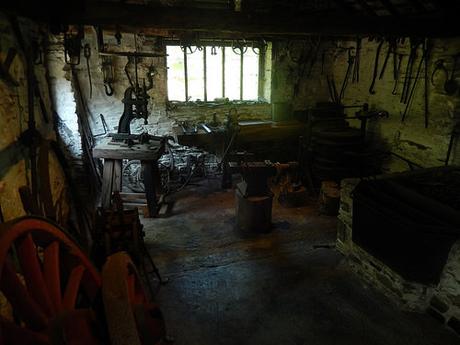
Now, it was time to visit the Wheelwright’s workshops. Starting with the metalwork and blacksmithing areas.
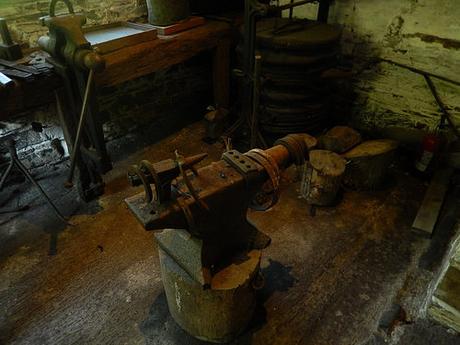
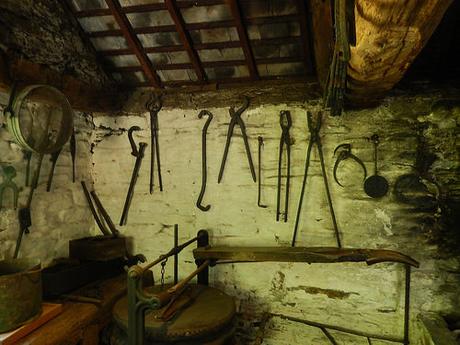
Then, to my delight, there was another area for woodworking:
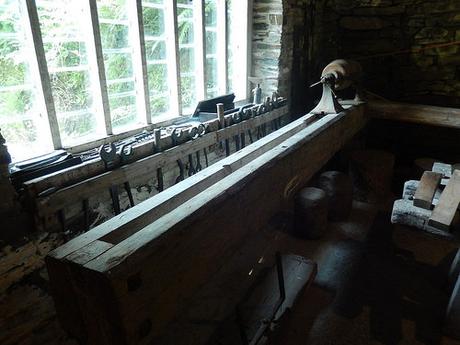
A large lathe of some sort? I’m not sure how it would’ve been powered. With a lack of a tailstock, maybe it was actually used for drilling?
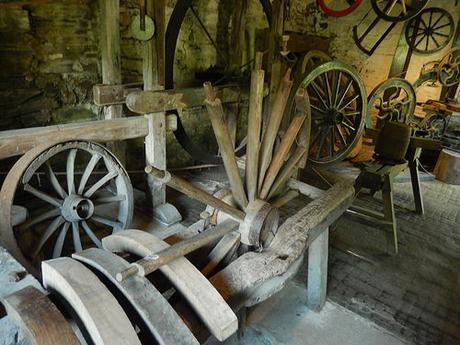
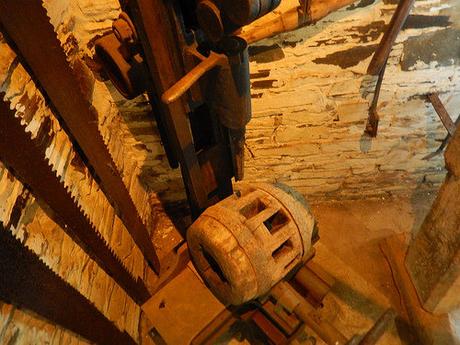
A large mortising machine that pre-dates the intervention of the hollow chisel and auger. One of those where you really would’ve had to chop your square or rectangular hole.
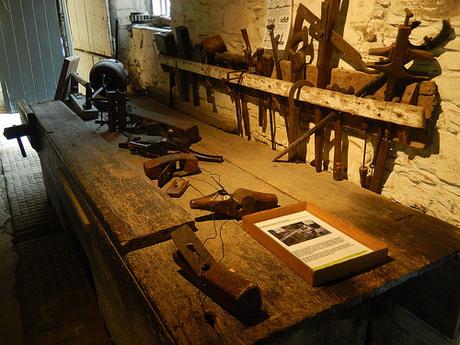
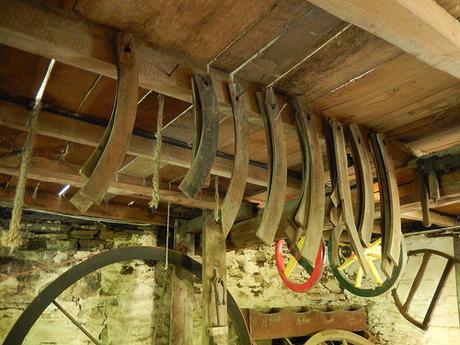
Templates used for shaping various spoked-wheel components. I didn’t take note of what these were actually made of. Did they used a form of plywood, in those days? MDF, of course, wouldn’t have been around.
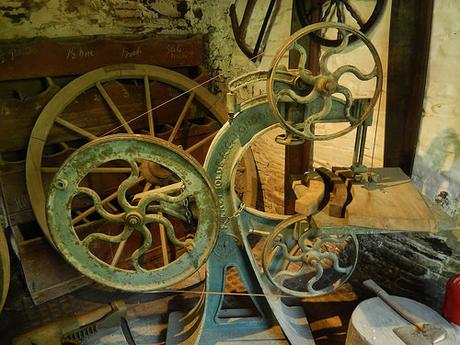
This three-wheeled bandsaw was fascinating and looked as though the middle wheel might’ve been driven by hand.
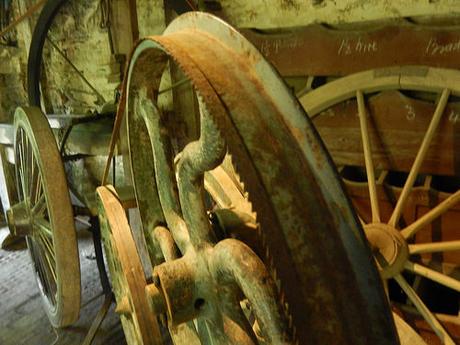
Those wheels didn’t have tyres, hence why the teeth of the blade would overhang the front edge of the wheels. Today, of course, modern bandsaws typically rely on the blade sitting centrally on rubber.
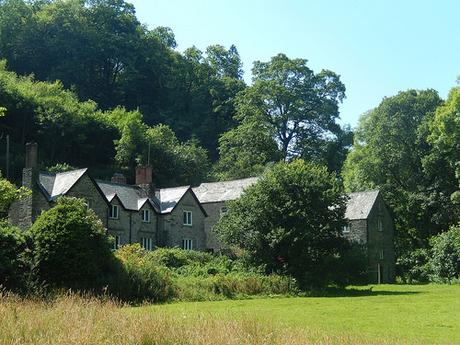
There’s even a holiday home that you can rent, opposite the mill.
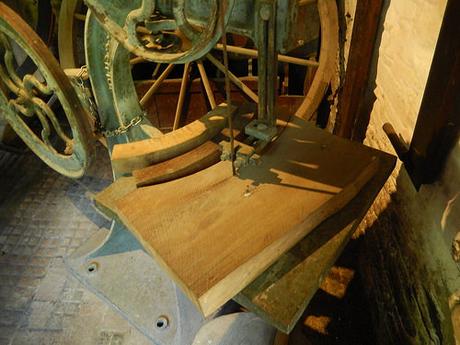
Clearly, someone’s been having a go on it. I’d have liked to myself, but for the chains wrap around it. Today, many operations like this would be done vertically on a pillar drill. Perhaps, even, a CNC router.
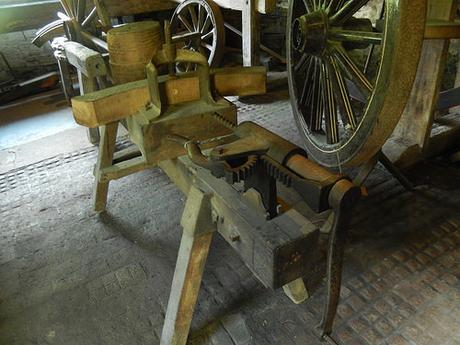
There was also a sturdy rig, set up for accurate drilling.
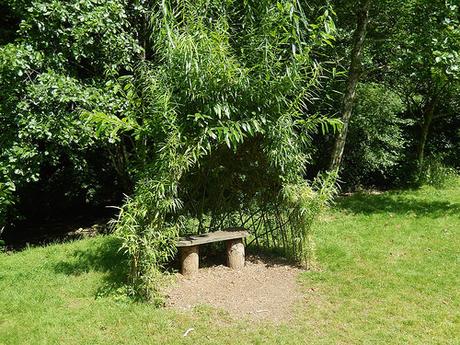
By now, I’d seen just about everything I had hoped to and was beginning to think about leaving, with further thoughts of the two-hour drive home and an official end to my long weekend away.
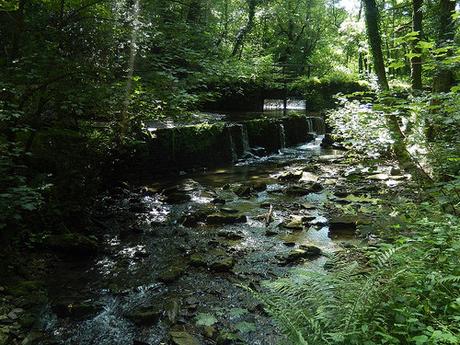
Before all of that, I took one last walk uphill, climbing deeper in to the woods. That’s where I found this weir and, aside from the occasional fly, it was a cool and refreshing space in which to finish the snacks I’d bought with me.
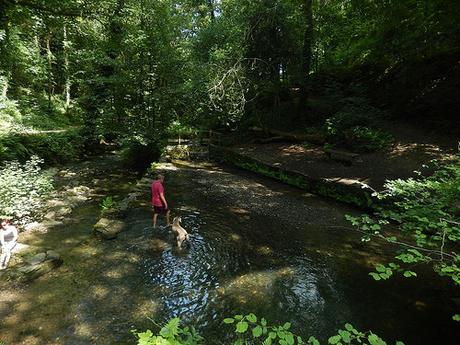
I left just after 16.00, which meant I’d stayed for about four-hours. Without a doubt, I preferred Cotehele Mill to the house and gardens. It’s one that might interest other woodworkers as well.
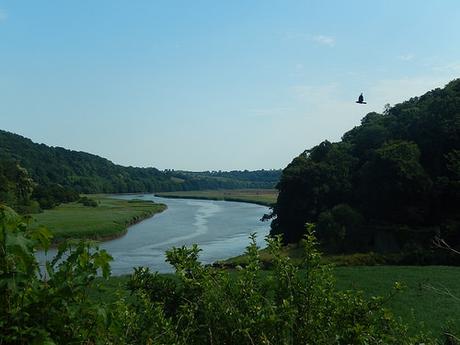
One question remains…
How do you pronounce ‘Cotehele’?
I heard one National Trust volunteer say “Co-teel” and that’s good enough for me. In the café, I overheard a visitor say “Coh-teh-lee” and so, I’d imagine there are further variants on this name!
